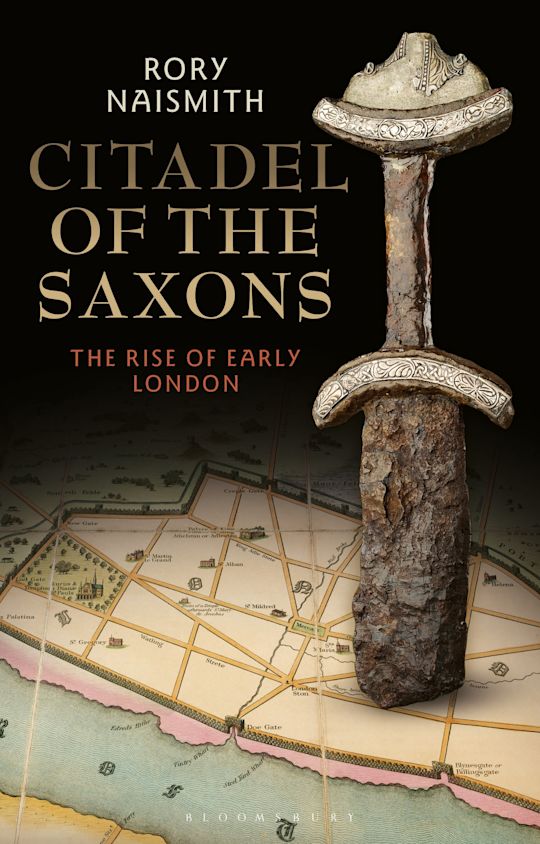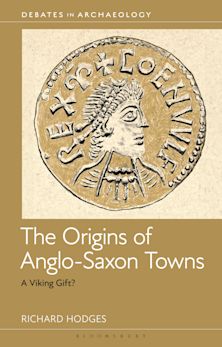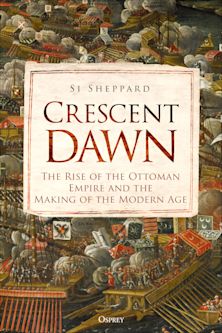- Home
- ACADEMIC
- History
- Medieval History
- Citadel of the Saxons
You must sign in to add this item to your wishlist. Please sign in or create an account
Description
With a past as deep and sinewy as the famous River Thames that twists like an eel around the jutting peninsula of Mudchute and the Isle of Dogs, London is one of the world's greatest and most resilient cities. Born beside the sludge and the silt of the meandering waterway that has always been its lifeblood, it has weathered invasion, flood, abandonment, fire and bombing. The modern story of London is well known. Much has been written about the later history of this megalopolis which, like a seductive dark star, has drawn incomers perpetually into its orbit. Yet, as Rory Naismith reveals – in his zesty evocation of the nascent medieval city – much less has been said about how close it came to earlier obliteration.
Following the collapse of Roman civilization in fifth-century Britannia, darkness fell over the former province. Villas crumbled to ruin; vital commodities became scarce; cities decayed; and Londinium, the capital, was all but abandoned. Yet despite its demise as a living city, memories of its greatness endured like the moss and bindweed which now ensnared its toppled columns and pilasters. By the 600s a new settlement, Lundenwic, was established on the banks of the River Thames by enterprising traders who braved the North Sea in their precarious small boats. The history of the city's phoenix-like resurrection, as it was transformed from an empty shell into a court of kings – and favoured setting for church councils from across the land – is still virtually unknown. The author here vividly evokes the forgotten Lundenwic and the later fortress on the Thames – Lundenburgh – of desperate Anglo-Saxon defenders who retreated inside their Roman walls to stand fast against menacing Viking incursions.
Recalling the lost cities which laid the foundations of today's great capital, this book tells the stirring story of how dead Londinium was reborn, against the odds, as a bulwark against the Danes and a pivotal English citadel. It recounts how Anglo-Saxon London survived to become the most important town in England – and a vital stronghold in later campaigns against the Normans in 1066. Revealing the remarkable extent to which London was at the centre of things, from the very beginning, this volume at last gives the vibrant early medieval city its due.
Table of Contents
List of Maps and Figures
Abbreviations
Timeline
Introduction
1. Roman London and its End: First to Fifth Centuries AD
2. Among the Ruins: Post-Roman London
3. London between Kingdoms: c.600–800
4. Lundenwic: 'An Emporium for Many Nations'
5. Alfred the Great and the Vikings
6. London in the Tenth Century: c.900–75
7. Late Anglo-Saxon London
8. London in 1066: The Battle of Hastings and After
Notes
Select Bibliography
Where to See Anglo-Saxon London
Index
Product details

| Published | 11 Jul 2019 |
|---|---|
| Format | Hardback |
| Edition | 1st |
| Extent | 290 |
| ISBN | 9781350135680 |
| Imprint | Bloomsbury Academic |
| Illustrations | 28 bw integrated, 5 maps |
| Dimensions | 234 x 156 mm |
| Publisher | Bloomsbury Publishing |
About the contributors
Reviews
-
Excellent history… Among the most fascinating aspects of this work are Naismith's careful and cogent explanations on the interpretation of findings and artifacts.
CHOICE
-
Naismith's service to old London is heroic. In carefully sorting and untangling its post-Roman rebirth he allows a crucial phase in its long life to take its rightful place in the annals of the great and monstrous city.
The Spectator
-
Impeccably researched, engagingly written and handsomely presented ... this is a timely reminder that the prominence of London was historically contingent rather than inevitable.
BBC History Magazine
-
With his deft use of archaeology, the tenuous literary sources and numismatic evidence ... Naismith manages to weave together a very effective account of London's political and economic development.
Literary Review
-
Written with an evocative turn of phrase and a sharp eye for interesting detail, Citadel of the Saxons is packed full of information, and impressive in its scope.
Current Archaeology
-
An essential, impressively informative, and core addition to personal reading lists, as well as community, college, and university library Medieval Studies collections, "Citadel of the Saxons" is a non-fiction history that reads as smoothly as the most well crafted novel.
Library Bookwatch



































